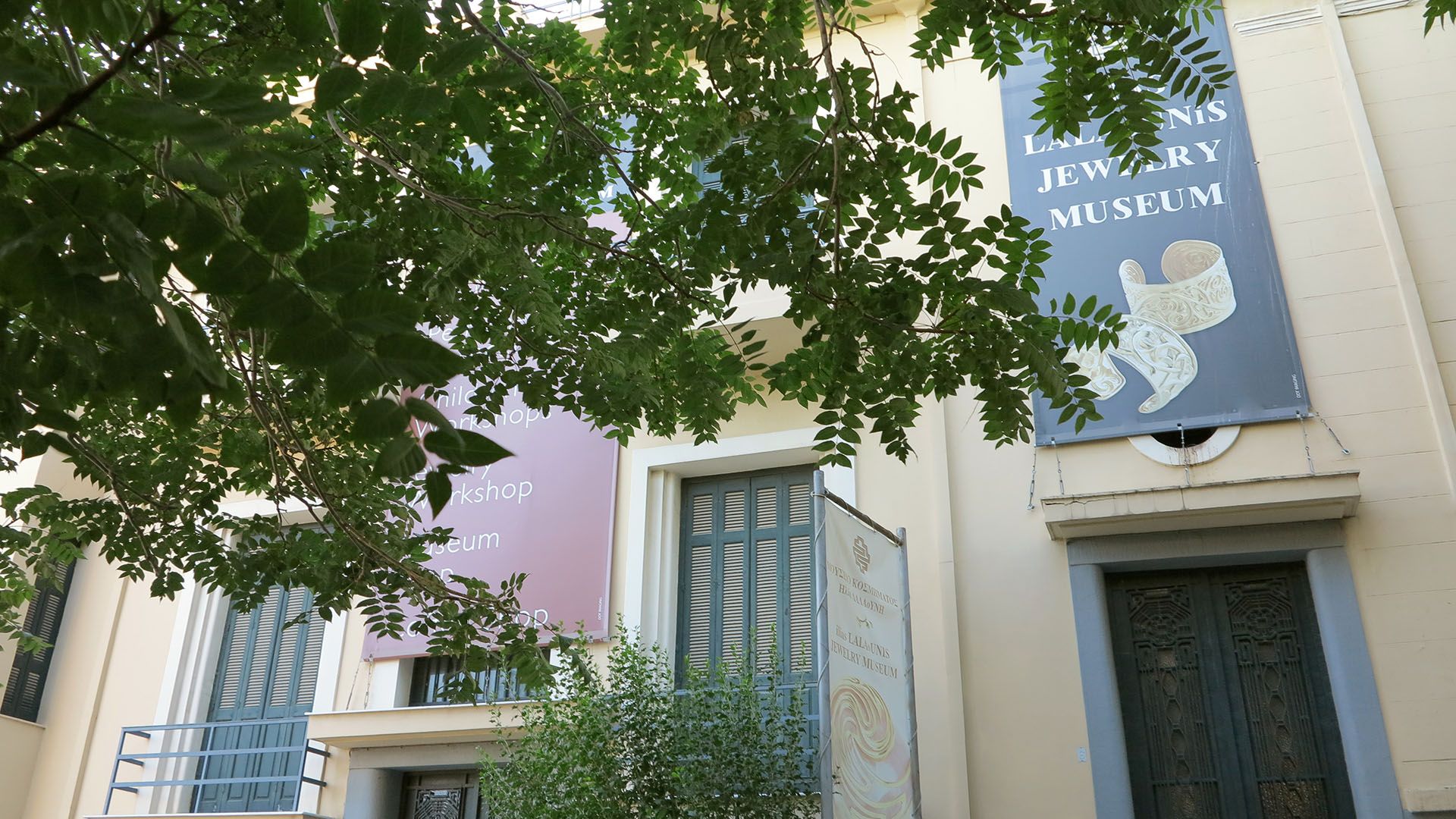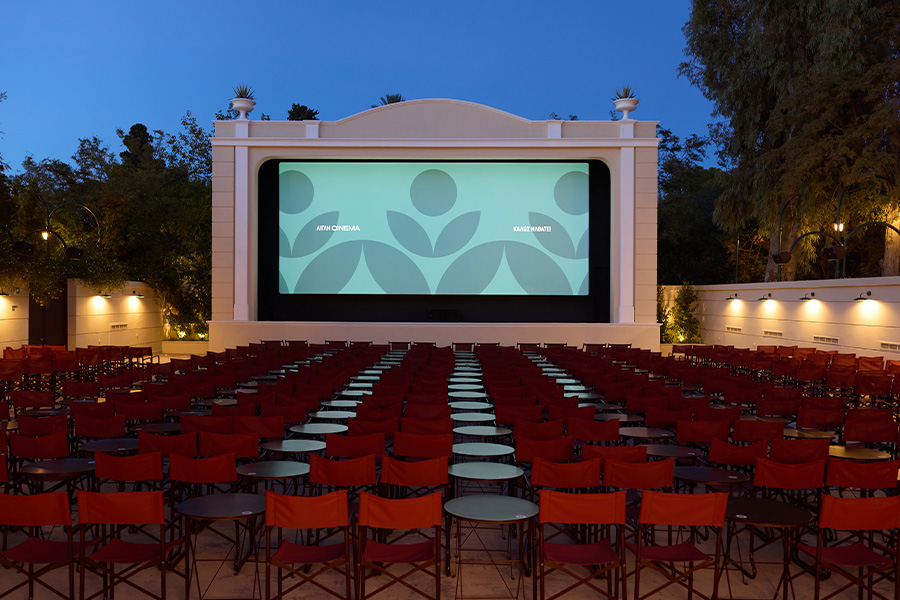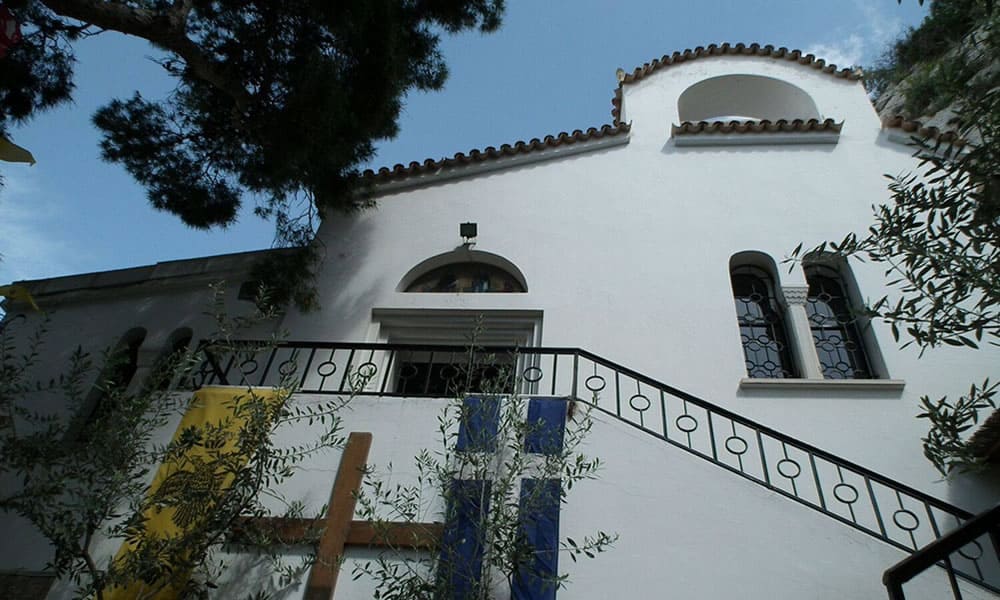The Nicholas P. Goulandris Foundation – Museum of Cycladic Art
Informations
Address:
Neofitou Douka 4, Athina 106 74, Greece
The Nicholas P. Goulandris Foundation – Museum of Cycladic Art
The Museum of Cycladic Art is a vibrant cultural organization at the center of Athens that focuses on the promotion of the ancient cultures of the Aegean and Cyprus, with a special emphasis on Cycladic art of the 3rd B.C. It has been operating since 1986 to house the private antiquities collection of Ntolli and Nikolaos Goulandris. Since then, it has expanded significantly and today houses one of the most comprehensive private collections of Cycladic Art in the world, with representative examples of the world-famous Cycladic marble figurines. The mission of the Museum is the promotion of the Aegean Culture (from 6.000 BC) and the dissemination of Art up to the contemporary creators, in a local and international level.
The Museum’s Cycladic Art Collection is an important attraction as the simple marble figurines depicting naked human figures fascinate the visitor with their simplicity and abstraction, elements that inspired, after all, great artists of the 20th century, such as Brancusi, Modigliani, Giacometti, Hepworth, Moore, and Ai Weiwei. The Museum’s permanent collections include 3,000 objects of Cycladic, Ancient Greek and Ancient Cypriot Art, evidence of cultures that flourished in the Aegean and the eastern Mediterranean from the 4th B.C. Millennium to about the 6th century AD. The periodic exhibitions of the Museum of Cycladic Art focus on archaeology, modern and contemporary art and aim to bring the public into contact not only with antiquity but also with important artists of the 20th and 21st centuries, exploring the links between ancient cultures and contemporary artistic creation. Among others, works and exhibitions of the artists who have been hosted are Salvador Dali, Pablo Picasso, Thomas Struth, Louise Bourgeois, Sarah Lucas, Ugo Rondinone, Jannis Kounellis, Mario Merz, Ai Weiwei, Cy Twombly, George Condo.
The Cycladic civilization flourished in the islands of the central Aegean during the Early Bronze Age (3rd millennium BC). The Museum of Cycladic Art maintains one of the most important and complete collections of Cycladic antiquities in the world, with representative samples of figurines and vases, weapons and tools, as well as ceramics from all phases of the Proto-Cycladic period. The most characteristic creation of this culture is the marble sculpture with the abstract forms of the figurines. Despite the fact that Cycladic marble figurines and vases impress today with the almost transparent whiteness of their material, we know that the Cyclades loved color and used it extensively in their creations, for practical or symbolic reasons.
The Cycladic Collection of the Museum of Cycladic Art is housed on the 1st floor of the permanent collections building and was inaugurated in 1986. It includes a large number of high-quality marble figurines and vases, some of the earliest bronze objects in the Aegean, clay vessels of daily and ceremonial use, etc. most of which are placed in the 3rd B.C. Also includes: exquisitely sculpted marble flasks, plates, goblets and animal-shaped vases, marble stations, metal objects such as bronze tools and weapons, lead figurines and a small silver vessel, symbolic objects such as pan-shaped vases, which are decorated with incised motifs reminiscent of the sea, the stars and female fertility, the so-called “Treasure of Keros”. One of the most important objects on display here is the female figurine 724 of the Proto-Cycladic II period, with a height of 1.40 m making it the second largest in the world, while the known as the “Vessel of Pigeons” (SNG 329), which holds also featured prominently in the exhibition, it is the largest and most complete example of a discoid panel with hologlyphs of birds found to date. The marble figurines are the most important creation of Cycladic art.
Most of them depict naked female figures with arms folded over the abdomen, knees slightly bent and the head slightly lifted back. This type is called “normal” by experts, because it is the preeminent type of figurines from the heyday of Cycladic art (2700-2300 BC). The “normal” type includes various variations, which have taken their names from the places where they were first found. Some early figurines, which do not show the above elements in full development, are called “pre-normal” while a series of late figurines with degenerate features are called post-normal. In addition to the normal figurines, there are several examples that depict the female form in a schematic manner. The most well-known type are violin-shaped figurines, so named because their shape resembles a violin. The male figure is rarely represented in Cycladic art, mainly in effigies of musicians or warriors, while there are few examples of normal male figurines. Finally, there is also a small group of unusual figurines depicting clusters of figures of various types.
The origin of most Cycladic figurines is unknown to us, as they are the products of illegal diggers. Among those that have come from systematic archaeological investigations, most have been found in tombs. This fact has led many researchers to interpret them as objects of religious-ritual use. Their finding, however, also in settlements or other non-burial sites, and the fact that only a small number of Cycladic tombs contained such figurines, suggests that their use was more complex. Ancient Greek Art constitutes one of the most important phenomena of world culture and contributed decisively to shaping the character and aesthetics of the modern Western world. The Ancient Greek Art Collection includes decorated vases, clay figurines, bronze vessels, stone sculptures, gold jewelry and glassware, covering a large chronological period from the 2nd millennium B.C. until the 4th c. A.D. During this long period important socio-political developments took place, including the genesis of the ancient Greek city, the emergence of democracy, and the creation of the first Mediterranean empires. Each of these developments left its mark on the art of the period and produced images that reflected different social values and standards. The exhibition on the 2nd floor of the museum presents in a succinct manner the main social, artistic and technological developments of ancient Greek history. The exhibition on the 4th floor offers visitors an original view at the daily life of ancient Athens, enriched with educational material.
Ancient Greek Art, a story full of images: The exhibition is a synthetic approach to the history of Aegean societies from 2000 B.C. until the 4th c. A.D. Through approximately 350 exhibits and interactive applications, the visitor follows the most important social and political developments from the birth of the ancient Greek culture to its creative mix with the Roman tradition, as they are reflected in the permanent transformations of art and ideology. A part of exhibition is dedicated to ancient Greek technology. Through interactive applications, the visitor learns what methods and tools were used to make clay vessels and figurines, bronze weapons and tools, gold jewelry and glassware.
Ancient Cypriot Art is an impressive example of fruitful cultural mixes and combinations. It creatively combines local traditions with influences from the Aegean, Egypt, and the Near East, reflecting the constant interactions between Mediterranean cultures in antiquity. The Cyprus Collection of the museum (one of the largest outside Cyprus) includes rare prehistoric figurines, archaic and classical sculptures, inscriptions, bronze objects, coins, impressive gold jewellery, glass objects and various types of pottery dating from the 4th millennium B.C to medieval times. The most important objects of the collection are presented on the 3rd floor of the museum in an exhibition with original interactive applications. The Thanos N. Zintilis Collection of Cypriot Antiquities, one of the most important in the world, was added to the permanent collections of the Museum of Cycladic Art in 2002 under a long-term loan regime, and was presented to the public for the first time in 2004. In 2012, the re-exhibition of the Collection was completed based on the new museology study, which allowed the addition of more objects which increased to 550 (from 400) but also a new approach to the categories and the affinities of the objects of the Collection dating from the Chalcolithic to the Byzantine, medieval and newer periods. The new presentation highlights with a modern museological eye – in terms of design, colors, lighting and display of the exhibits on graphic surfaces related to the objects – the ceramics rich in rhythms, decoration and imaginative shapes of prehistoric and historical times, which represent the core of the Collection .
Pottery is presented in ten showcases, chronologically covering a very wide spectrum from the middle of the third B.C. to late antiquity. This is followed by individual thematic sections-showcases on worship, weaving, perfumery, burial practices, writing, metalwork, coinage, seal carving, and foreign relations. The perimeter presentation is completed with glassware and jewelry in chronological and specific sections. The evolution of the human figure in Idol and Sculpture from the Chalcolithic to the Roman period is presented in corresponding, prominent showcases in the center of the room, thus giving the visitor the opportunity to understand certain types of its long-standing evolution from the early, Chalcolithic figurines and periapta of the 4th Millennium B.C., made from the greenish picrolith indigenous to Cyprus, to its heyday in the art of coroplastia and monumental sculpture in limestone – and more rarely in marble – of historical times. In addition to texts, introductory and thematic, the exhibition includes maps and a chronological table, as well as multimedia applications on touch screens with texts, images and drawings that provide further information on Cypriot copper, the history of writing and coins.








